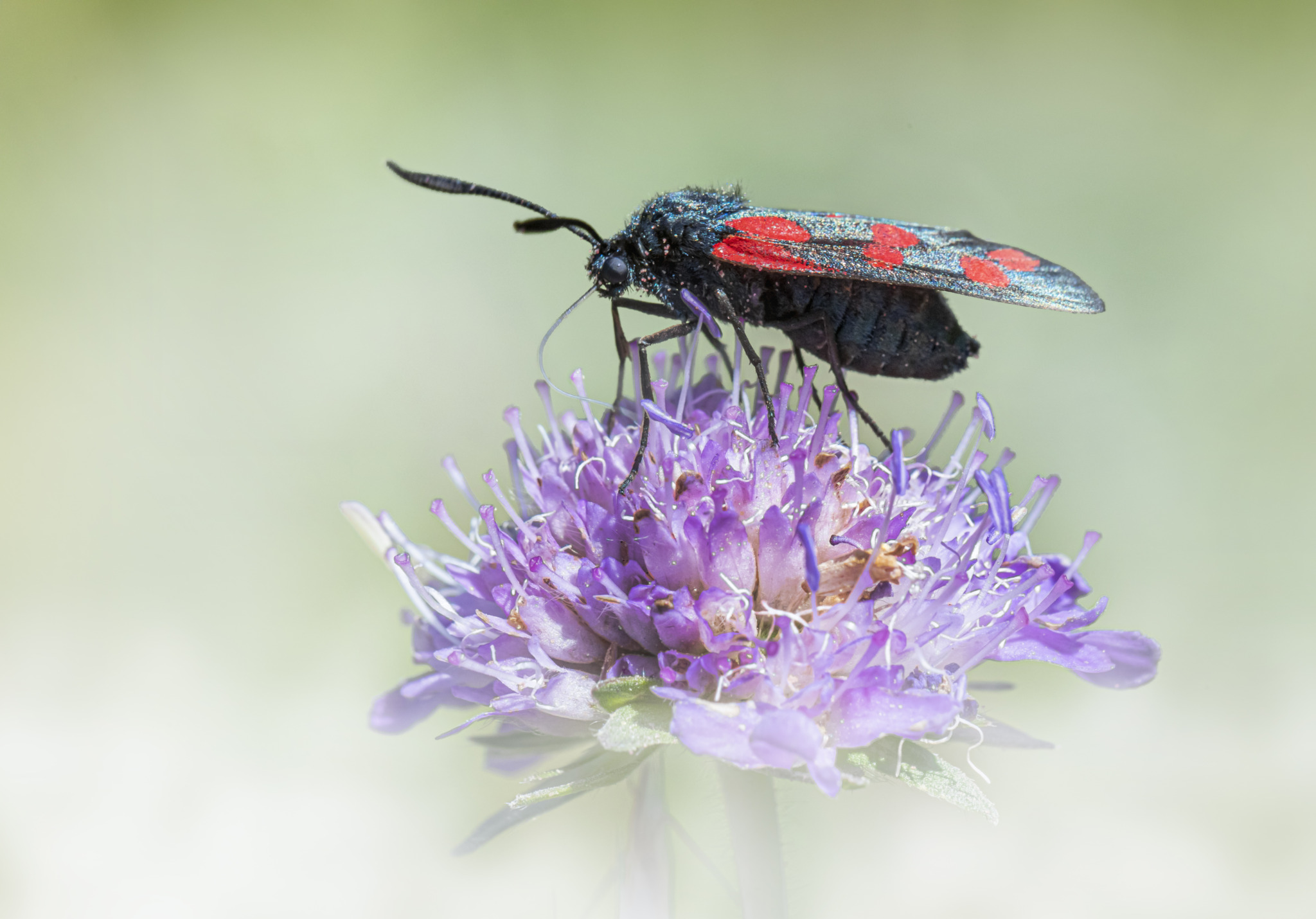The Narrow-bordered Five-spot Burnet, scientific name Zygaena lonicerae, is a species of moth belonging to the family Zygaenidae. Here’s an overview of this fascinating insect:
- Appearance: The Narrow-bordered Five-spot Burnet is a small to medium-sized moth with a wingspan ranging from about 25 to 35 millimeters. It has distinctive black wings with five red spots arranged in a specific pattern on each forewing. The hindwings are usually black with a metallic blue or green sheen. However, there can be variations in coloration and markings depending on the geographic location and individual variation.
- Habitat: These moths inhabit a variety of grassy habitats, including meadows, grasslands, heathlands, and coastal dunes. They are often found in areas with an abundance of their larval food plants, which typically include various species of trefoils (genus Lotus) and bird’s-foot trefoils (Lotus corniculatus).
- Distribution: The Narrow-bordered Five-spot Burnet is distributed throughout much of Europe, including the United Kingdom, France, Germany, Spain, Italy, and Scandinavia. It can also be found in parts of Asia, including the Middle East and Central Asia.
- Lifecycle: Like other members of the Zygaenidae family, the Narrow-bordered Five-spot Burnet undergoes a complete metamorphosis, consisting of four stages: egg, larva (caterpillar), pupa (chrysalis), and adult. The larvae feed on the leaves of their host plants, where they are protected from predators by toxic chemicals obtained from their food. The adult moths emerge in the summer months and are active during the daytime.
- Mating and Reproduction: Adult Narrow-bordered Five-spot Burnet moths engage in courtship behavior, with males actively seeking out females for mating. After mating, the female lays her eggs on or near the larval food plants. The eggs hatch into caterpillars, which feed and grow before pupating and emerging as adult moths.
- Ecological Importance: While the larvae of the Narrow-bordered Five-spot Burnet can sometimes be considered pests due to their feeding habits on certain crops and forage plants, they also play a role in the ecosystem as prey for birds, small mammals, and other insect predators. Additionally, adult moths serve as pollinators, contributing to the reproductive success of flowering plants in their habitat.
Overall, the Narrow-bordered Five-spot Burnet is a visually striking moth species with interesting ecological interactions and adaptations, making it a fascinating subject for study and observation in its natural habitat.
Views: 68
Subscribe to the newsletter:
